TCA cycle rewiring fosters metabolic adaptation to oxygen restriction in skeletal muscle from rodents and humans
- PMID: 28852047
- PMCID: PMC5575144
- DOI: 10.1038/s41598-017-10097-4
TCA cycle rewiring fosters metabolic adaptation to oxygen restriction in skeletal muscle from rodents and humans
Abstract
In mammals, hypoxic stress management is under the control of the Hypoxia Inducible Factors, whose activity depends on the stabilization of their labile α subunit. In particular, the skeletal muscle appears to be able to react to changes in substrates and O2 delivery by tuning its metabolism. The present study provides a comprehensive overview of skeletal muscle metabolic adaptation to hypoxia in mice and in human subjects exposed for 7/9 and 19 days to high altitude levels. The investigation was carried out combining proteomics, qRT-PCR mRNA transcripts analysis, and enzyme activities assessment in rodents, and protein detection by antigen antibody reactions in humans and rodents. Results indicate that the skeletal muscle react to a decreased O2 delivery by rewiring the TCA cycle. The first TCA rewiring occurs in mice in 2-day hypoxia and is mediated by cytosolic malate whereas in 10-day hypoxia the rewiring is mediated by Idh1 and Fasn, supported by glutamine and HIF-2α increments. The combination of these specific anaplerotic steps can support energy demand despite HIFs degradation. These results were confirmed in human subjects, demonstrating that the TCA double rewiring represents an essential factor for the maintenance of muscle homeostasis during adaptation to hypoxia.
Conflict of interest statement
The authors declare that they have no competing interests.
Figures

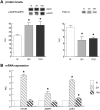
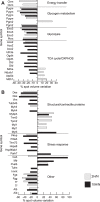
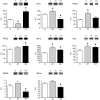


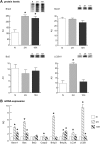

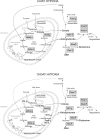
Similar articles
-
HIF-1alpha and HIF-2alpha play a central role in stretch-induced but not shear-stress-induced angiogenesis in rat skeletal muscle.J Physiol. 2007 Sep 1;583(Pt 2):753-66. doi: 10.1113/jphysiol.2007.136325. Epub 2007 Jul 12. J Physiol. 2007. PMID: 17627993 Free PMC article.
-
Unraveling the role of hypoxia-inducible factor (HIF)-1α and HIF-2α in the adaption process of human microvascular endothelial cells (HMEC-1) to hypoxia: Redundant HIF-dependent regulation of macrophage migration inhibitory factor.Microvasc Res. 2018 Mar;116:34-44. doi: 10.1016/j.mvr.2017.09.004. Epub 2017 Oct 6. Microvasc Res. 2018. PMID: 28993199
-
Yak response to high-altitude hypoxic stress by altering mRNA expression and DNA methylation of hypoxia-inducible factors.Anim Biotechnol. 2015;26(3):222-9. doi: 10.1080/10495398.2014.1002563. Anim Biotechnol. 2015. PMID: 25927169
-
HIF-1-driven skeletal muscle adaptations to chronic hypoxia: molecular insights into muscle physiology.Cell Mol Life Sci. 2015 Dec;72(24):4681-96. doi: 10.1007/s00018-015-2025-9. Epub 2015 Aug 23. Cell Mol Life Sci. 2015. PMID: 26298291 Free PMC article. Review.
-
Multiplicity of hypoxia-inducible transcription factors and their connection to the circadian clock in the zebrafish.Physiol Biochem Zool. 2015 Mar-Apr;88(2):146-57. doi: 10.1086/679751. Epub 2015 Jan 14. Physiol Biochem Zool. 2015. PMID: 25730270 Review.
Cited by
-
Complex I is bypassed during high intensity exercise.Nat Commun. 2019 Nov 7;10(1):5072. doi: 10.1038/s41467-019-12934-8. Nat Commun. 2019. PMID: 31699973 Free PMC article.
-
Muscle-specific regulation of right ventricular transcriptional responses to chronic hypoxia-induced hypertrophy by the muscle ring finger-1 (MuRF1) ubiquitin ligase in mice.BMC Med Genet. 2018 Sep 21;19(1):175. doi: 10.1186/s12881-018-0670-1. BMC Med Genet. 2018. PMID: 30241514 Free PMC article.
-
Proteomic and clinical biomarkers for acute mountain sickness in a longitudinal cohort.Commun Biol. 2022 Jun 6;5(1):548. doi: 10.1038/s42003-022-03514-6. Commun Biol. 2022. PMID: 35668171 Free PMC article.
-
Muscle Proteomic Profile before and after Enzyme Replacement Therapy in Late-Onset Pompe Disease.Int J Mol Sci. 2021 Mar 11;22(6):2850. doi: 10.3390/ijms22062850. Int J Mol Sci. 2021. PMID: 33799647 Free PMC article.
-
Re-Evaluating the Oxidative Phenotype: Can Endurance Exercise Save the Western World?Antioxidants (Basel). 2021 Apr 15;10(4):609. doi: 10.3390/antiox10040609. Antioxidants (Basel). 2021. PMID: 33921022 Free PMC article. Review.
References
Publication types
MeSH terms
Substances
LinkOut - more resources
Full Text Sources
Other Literature Sources
Research Materials
Miscellaneous

